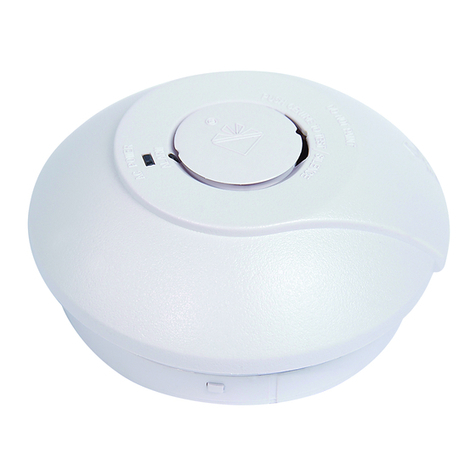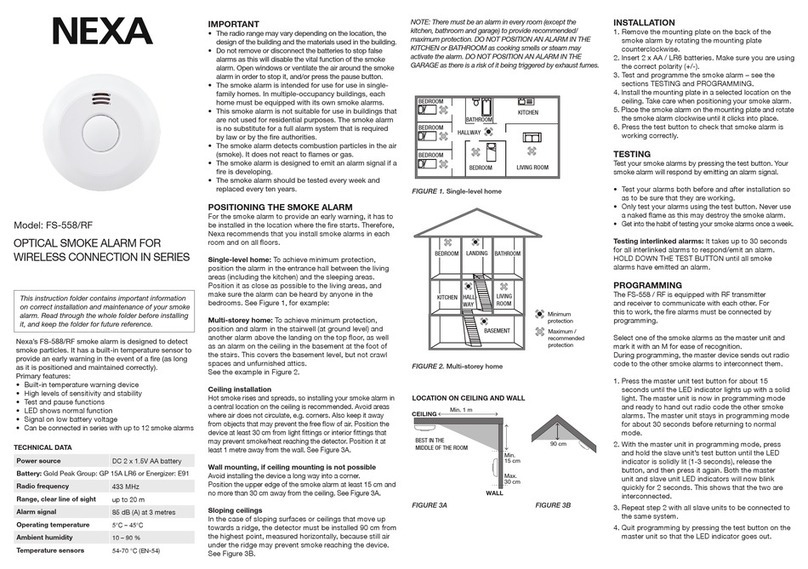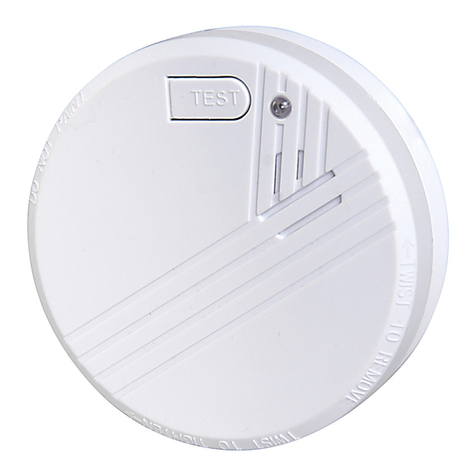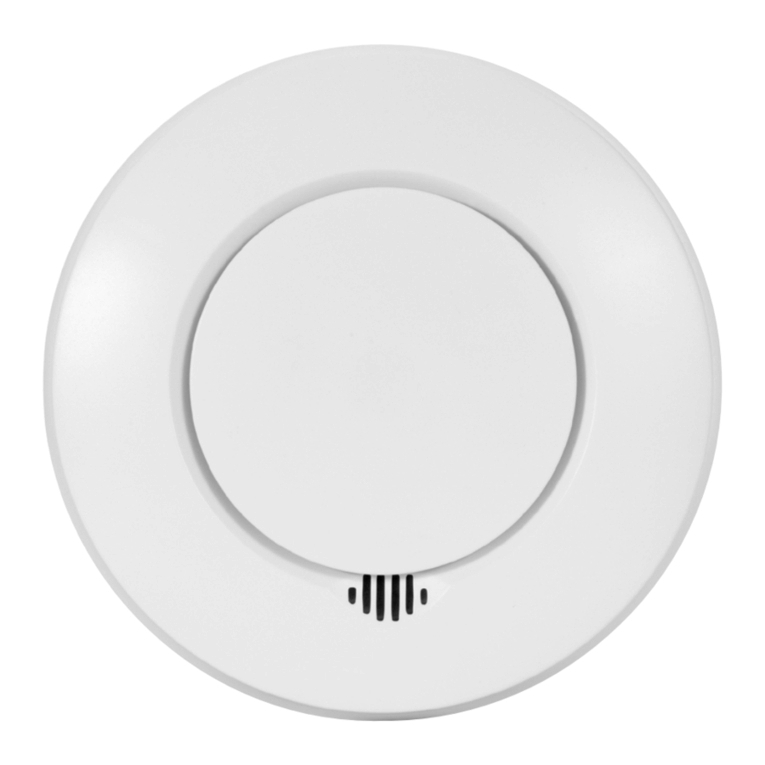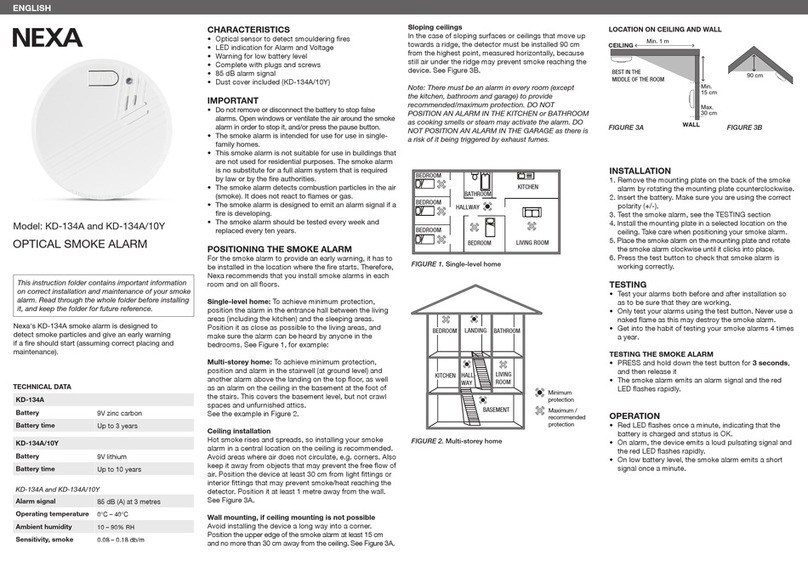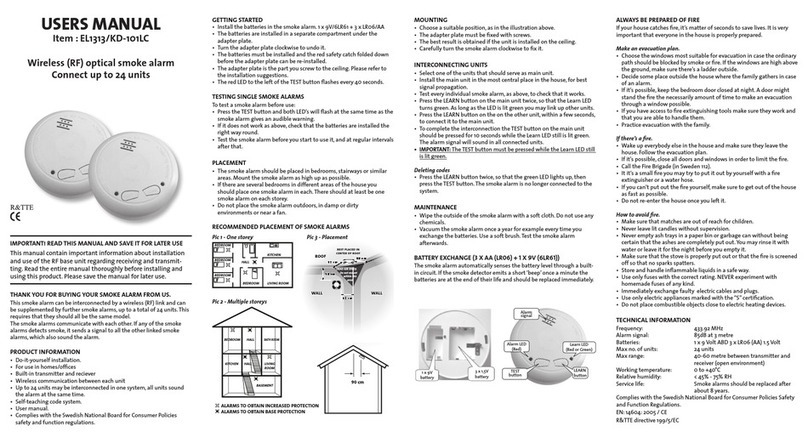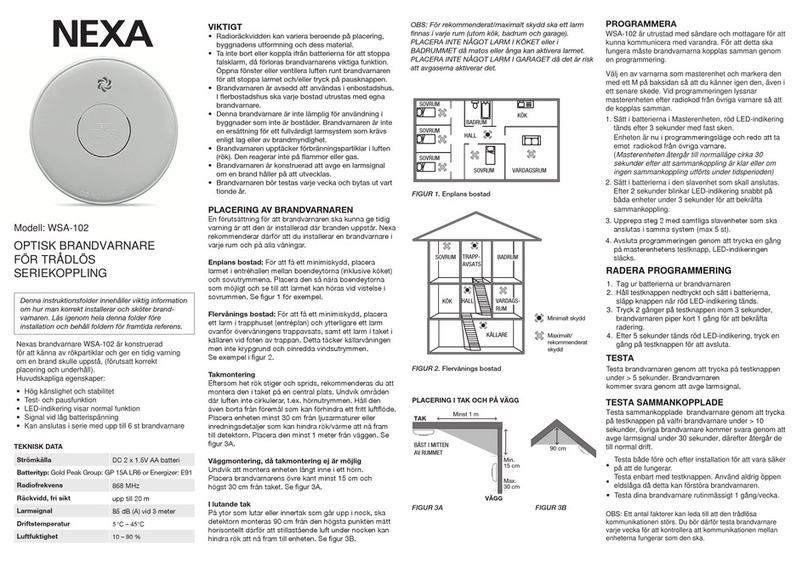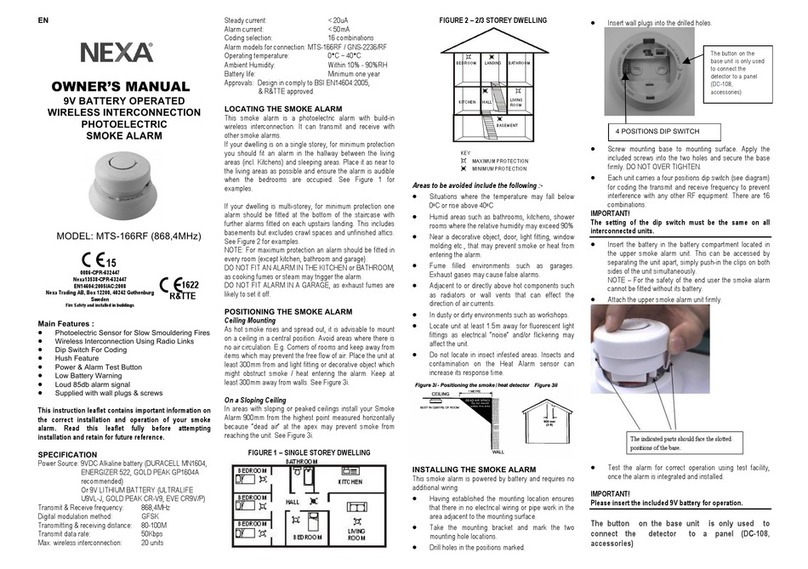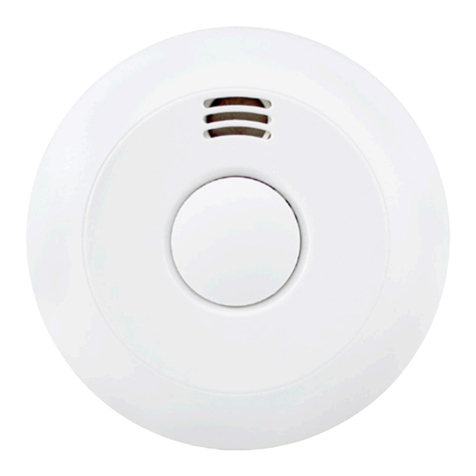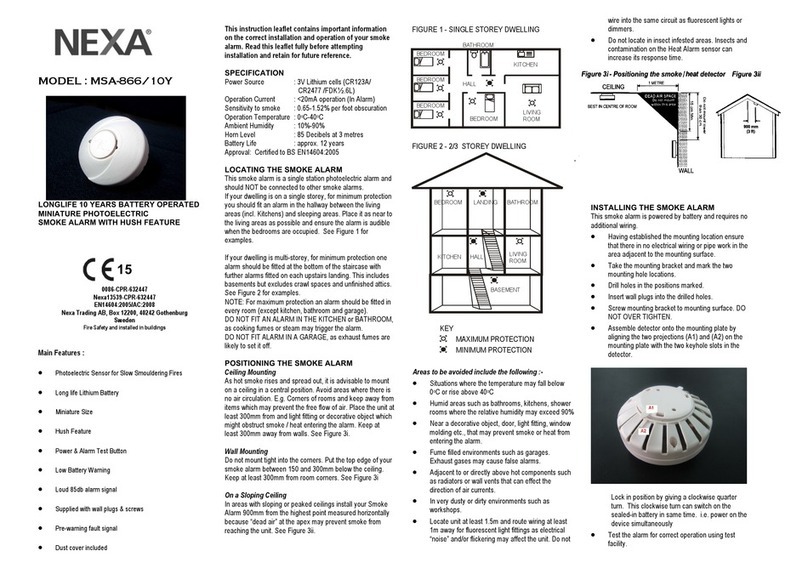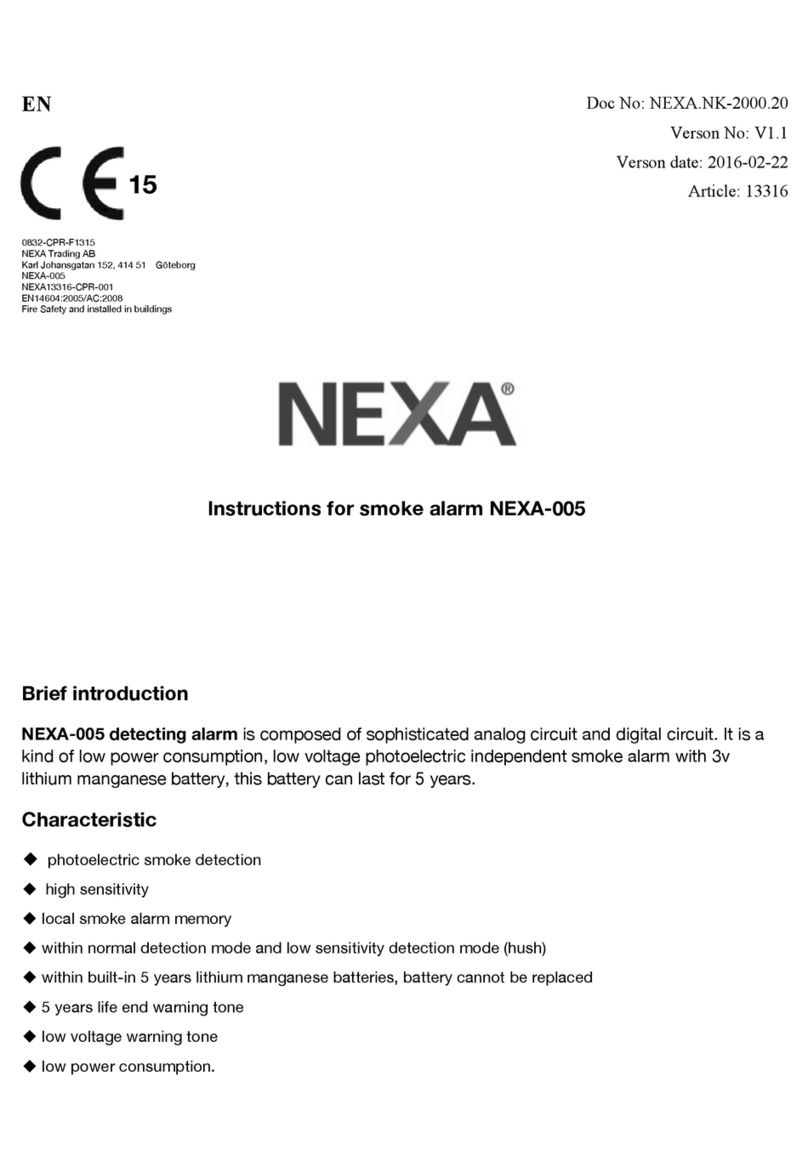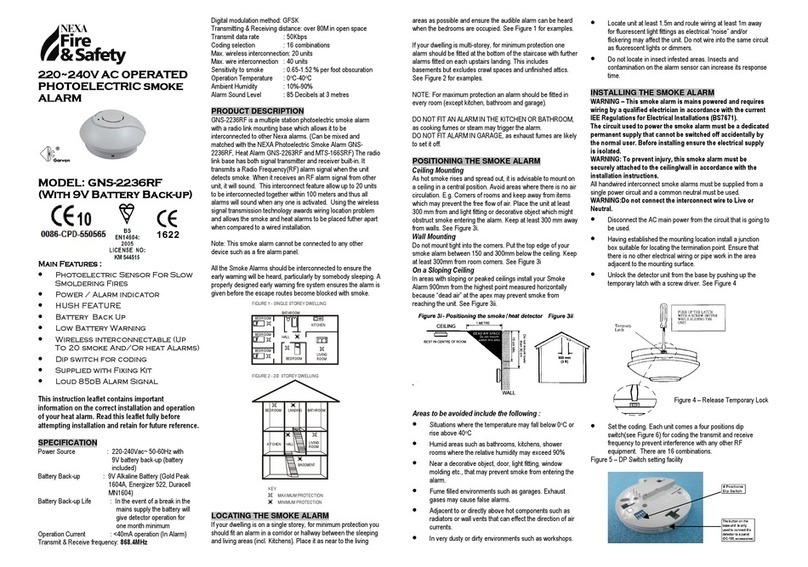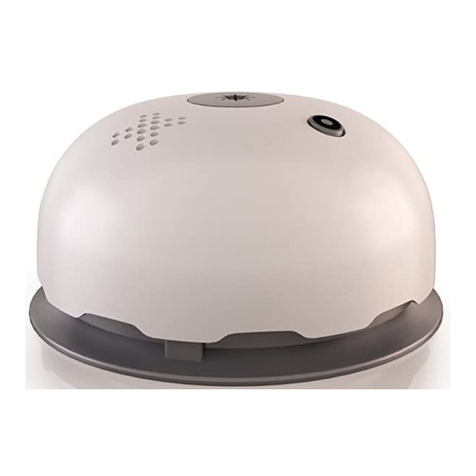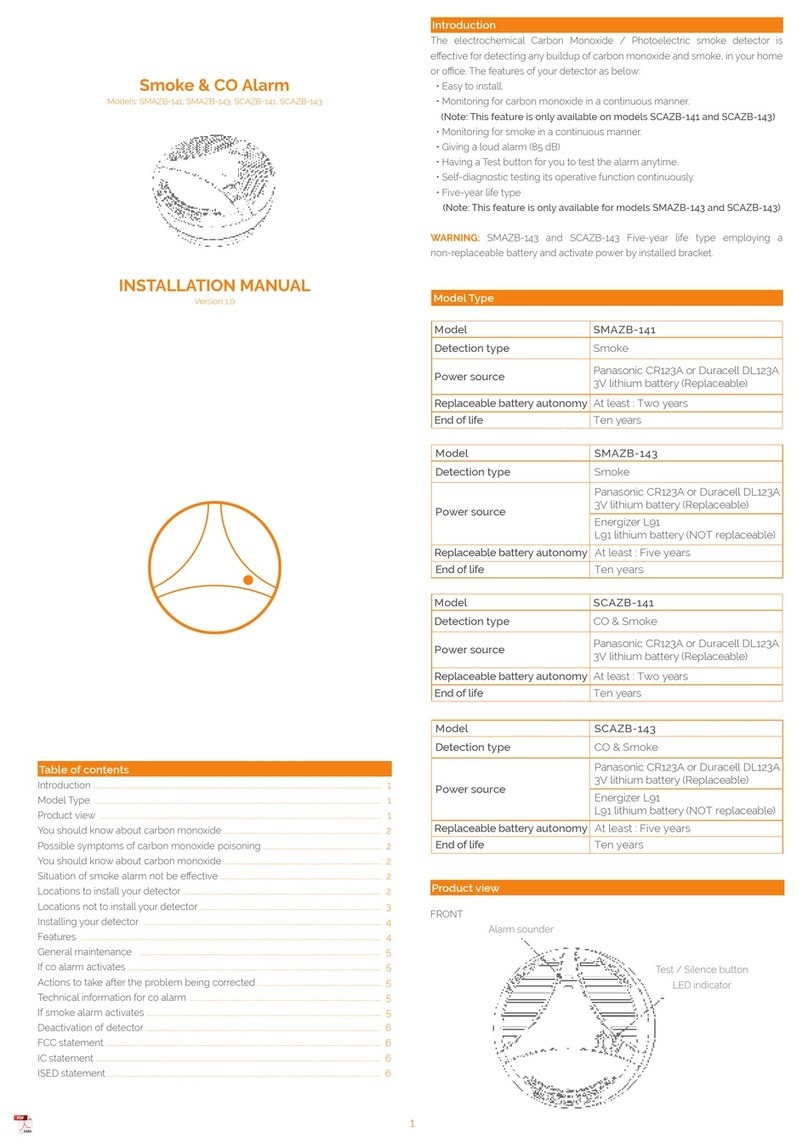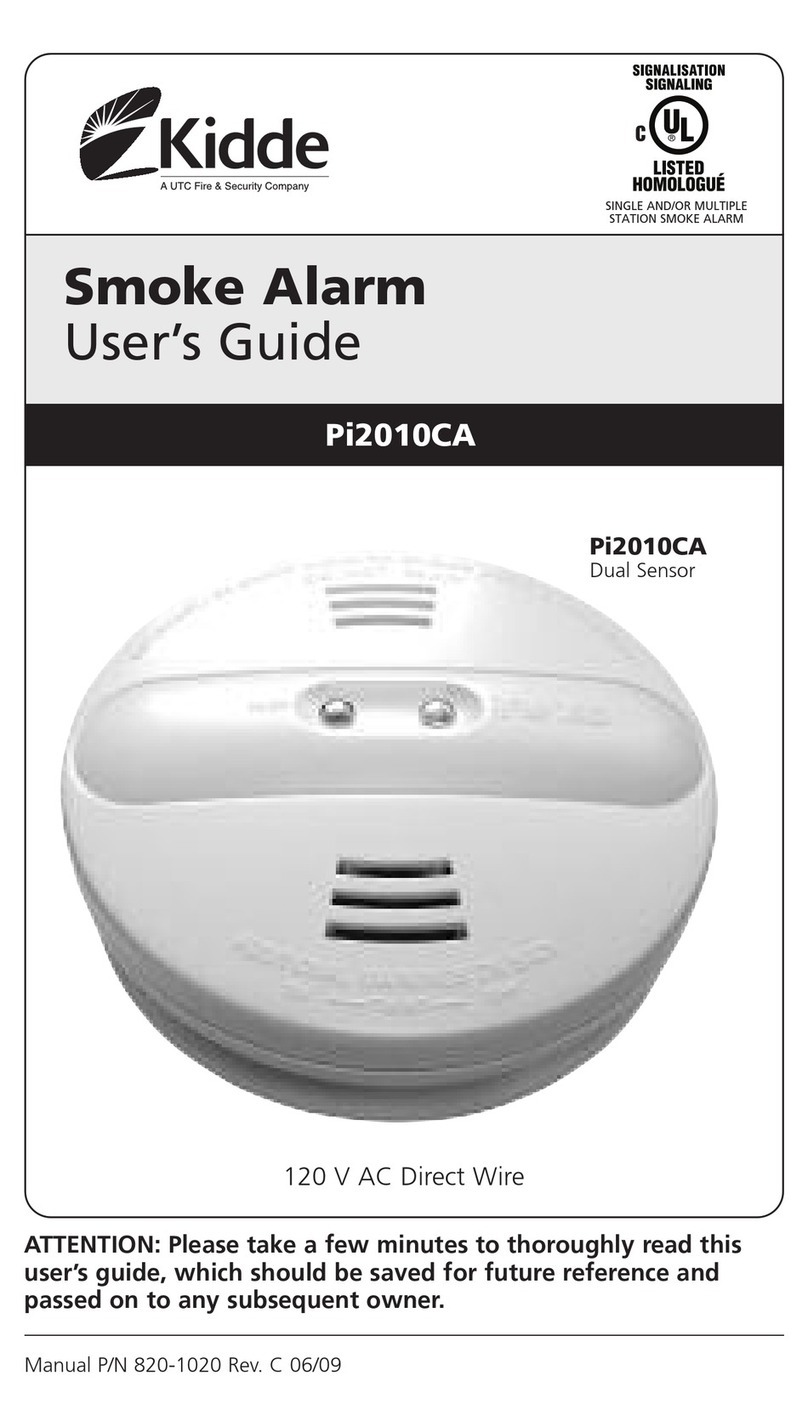IMPORTANT!
The setting of the dip switch must be the same on
all interconnected units.
Connect the wires to the correct terminals on the
mounting base and fix the mounting base in position..
Ensure the screws are fully tightened. See Figure 5.
Figure 5 –Wiring &
Interconnect facility
The alarm must be wired in accordance with
National wiring codes.
LIVE : connect to house wires coloured Brown,
Red or marked with L.
NEUTRAL : connect to house wires coloured
Blue, Black or marked with N.
INTERCONNECT : normally not used except to
hardwire interconnect to the mains smoke alarm
(Nexa model GNS-2236). Never use EARTH wire
for interconnect wire.
Remark
GNS-2236/RF smoke alarm & GNS-2263/RF heat
alarm are detectors, which can be interconnected
with each other by wireless radio links.
In another case, the user will have the option to
interconnect them to the other hard wired type
smoke alarms by the wiring be the “interconnection
terminal”on the base.
WARNING: Connection to the EARTH terminal is not
needed for correct functioning of the Smoke Alarm. It is
just for conveniently terminating any earth supply wire
coloured green or green/yellow. It does not provide
protective earthing for the Smoke Alarm
Insert a 9V battery firmly into battery compartment on
the rear of the alarm. NOTE POLARITY OF
CONNECTIONS. Ensure the metal tab is fully
depressed when the battery has been fitted.
NOTE –For the safety of the end user the smoke
alarm cannot be fitted without its battery.
Before assembly to base plate test the correct operation
of the smoke alarm (operating from the battery only) by
depressing the test button on the front of the alarm. The
unit should emit a loud pulsating alarm.
Assemble alarm onto the mounting plate by sliding it in
according to the direction of the arrows.
Restore the AC supply
Test the correct operation of the smoke alarm by
depressing the test button on the front of the detector. The
unit should emit a loud pulsating alarm.
Should use 2.1mm wire for connection.
Let the dust cover remain over the smoke alarm until the
the final cleaning is completely done. Applies mainly for
new construction or renovation.
OPERATING YOUR SMOKE ALARM
Once the smoke alarm has been installed a small GREEN
indicator light (LED) should be visible through the alarm grill
indicating that AC supply is healthy. A RED indicator light (LED)
should also flash approximately once a minute to indicate the
battery is healthy and the unit is operating properly.
If smoke is detected, the unit will emit a load pulsating alarm and
a RED indicator light (LED) will be flashing quickly at the same
time until the air is clear.
At normal time, the radio link module is working under sleep
mode. It will open the receiving window at a short time around
every 20 seconds. In order to awake it and set it at transmission
mode, the simplest way is to press the button on top of the
smoke detector. It will continually transmit as long as the button
is pressed.
To last two units’transmission and reception performances’
parameters, it is important to set them with the same code. The
dip switch for setting the code is available on the mounting base
of the unit. When one is at its receiving mode, it can receive a
triggering signal from the transmitting unit within 20 seconds. As
soon as the receiving unit gets the signal, it will activate the
alarm to sound loudly unit the transmitting signal is vanished.
TESTING YOUR SMOKE ALARM
It is recommended that you test your smoke alarm once a week
to ensure the detector is working correctly.
Push and hold the test button for approximately 3 seconds. A
loud pulsating alarm should sound and a RED indicator light
(LED)will flash at the same time.
NOTE –for multiple interconnected smoke alarms(either by
radio link or hardwire), only the RED indicator light (LED) of the
originating unit will flash rapidly. All other units in the
interconnect system will sound an alarm(for radio link
interconnected units, it will sound within 20 seconds) but their
RED indicator light (LED) will NOT flash. Test each alarm
checking that the alarm is triggered on all other alarms installed.
HUSH OR SILENCE FEATURE
This Smoke Alarm has a built-in Hush or Silence feature
incorporated into the Test button. If cooking or other non-
hazardous sources cause the unwanted alarm, it can be
temporarily silenced by depressing the test button and holding
for approximately 3 seconds. The alarm will enter a dormant
period for 10 minutes. The red LED will flash every 10 seconds
to indicate the sensitivity is reduced. At the end of the hush
period the alarm will reset to normal sensitivity.
NOTE –If the smoke density increase during this period(i.e.
from a fire) the unit will go into alarm mode.
LOW BATTERY WARNING
If the smoke alarm emits a short ‘beep’ once a minute the
battery is at the end of its life and should be replaced
immediately. This low voltage warning will be given for at least
30 days. In this case, the other interconnected units in the
system which are not in low battery condition will chirps for a
few seconds once a hour as long as the detector with the
“dead”battery beeps.
If the red indicator light (LED) does not flash every minute then
replace the battery.
BATTERY REPLACEMENT
Always TURN OFF the A.C. supply to the smoke alarm before
replacing the battery. Replace the battery at least once
annually, or immediately when the low battery signal sounds
once a minute, even though the smoke alarm is receiving A.C.
power.
Test the alarm for correct operation using the test facility
whenever the battery is replaced.
WARNING: DANGER OF EXPLOSION IF BATTERY IS
INCORRECTLY REPLACED. THE USE OF BATTERIES
OTHER THAN THOSE RECOMMENDED ON THE BACK OF
THE SMOKE ALARM MAY BE DETRIMENTAL TO ITS
OPERATION
The battery should only be replaced by a qualified electrician or
similarly qualified person.
Turn off the A.C. power supply to the smoke alarm.
Gently slide the smoke alarm out from the mounting
plate.
Remove the battery from the compartment.
Insert a new, healthy 9V battery. NOTE POLARITY OF
CONNECTIONS. Ensure the metal tab is fully
depressed when the battery has been fitted
Using the Push-to-Test button, test the smoke alarm to
verify 9V DC battery back-up. See “TESTING YOUR
SMOKE ALARM”
Reattached the smoke alarm to the mounting plate by
sliding until it snaps into place.
Turn on the AC power and test the smoke alarm using
the Push-to-Test button. See “TESTING YOUR SMOKE
ALARM”
MAINTAINING YOUR SMOKE ALARM
Clean your smoke alarm at least once every six months to
prevent dust build up. This can be done using a vacuum
cleaner with the brush attachment. Clean gently around the
front grilled section and sides.
The apparatus shall not be exposed to dripping or
splashing and no objects filled with liquids, such as vases,
shall be placed on the apparatus.
IMPORTANT SAFEGUARDS
Installation of your smoke alarm is only one step in your safety
plan. Other important steps should be taken to further improve
your safety.
Install the smoke alarm properly, following this
instruction leaflet
Test your smoke alarm weekly
Replace the battery immediately once depleted
Do not smoke in bed
Keep matches & lighters away from children
Store flammable materials in a proper manner and never use
them near naked flames or sparks
Maintain emergency equipment such as Fire Extinguishers,
escape ladders etc and ensure all occupants know how to
use them correctly.
Plan an escape route/s from your building in advance and
ensure all occupants are aware of them. Re-enforce this
awareness periodically through-out the year.
Make sure escape routes remain free of any obstructions.
WARNING: IF THERE IS ANY QUESTION AS TO THE CAUSE OF
AN ALARM IT SHOULD BE ASSUMED THAT THE ALARM IS
DUE TO AN ACTUAL FIRE AND THE DWELLING SHOULD BE
EVACUATED IMMEDIATELY.
THIS PRODUCT IS A SEALED UNIT AND CANNOT BE
REPAIRED –IF THE UNIT IS TAMPERED WITH IT WILL
INVALIDATE THE GUARANTEE. IF THE UNIT IS FAULTY
PLEASE RETURN IT TO YOUR ORIGINAL SUPPLIER WITH
YOUR PROOF OF PURCHASE.
YOUR SMOKE ALARM GUARANTEE
These smoke alarms are guaranteed to be free from defects in
materials and workmanships under normal use and service for a
period of three years from date of purchase. The company will not
be obligated to repair or replace parts which are found to be in need
of repair because of misuse, damage or alterations occur after the
date of purchase. Send the Smoke Alarm with proof of purchase,
postage and return postage prepaid, to local distributor. The liability
of the company arising from the sale of this smoke alarm shall not in
any case exceed the cost of replacement of smoke alarm and in no
case shall the company be liable for consequential loss or damages
resulting from the failure of the smoke alarm.
NEXA TRADING AB. SHALL HAVE NO LIABILITY FOR ANY PERSONAL INJURY
OR PROPERTY DAMAGE, OR ANY SPECIAL INCIDENTAL, CONTINGENT OR
CONSEQUENTIAL DAMAGE OF ANY KIND RESULTING FROM A FIRE. THE
EXCLUSIVE REMEDY FOR BREACH OF THE LIMITED WARRANTY CONTAINED
HEREIN IS THE REPAIR OR REPLACEMENT OF THE DETECTIVE PRODUCT AT
NEXA TRADING AB. OPTION. IN NO CASE SHALL NEXA TRADING AB’S
LIABILITY UNDER ANY OTHER REMEDY PRESCRIBED BY LAW EXCEED THE
PURCHASE PRICE. YOUR SMOKE ALARMS IS NOT A SUBSTITUTE FOR
PROPERTY, DISABILITY, LIFE OR OTHER INSURANCE OF ANY KIND.
APPROPRIATE COVERAGE IS YOUR RESPONSIBILITY. CONSULT YOUR
INSURANCE AGENT.
This does not affect your statutory rights.
This alarm is only suitable for single occupancy private dwellings
only and not intended for multi occupancy private dwellings or
commercial or industrial dwellings.
Waste electrical products should not be disposed of with normal
household waste. Please recycle where facilities exist. Check with
your Local Authority or retailer for recycling advice. New regulation
will encourage the recycling of Waste from Electrical and Electronic
Equipment (European "WEEE Directive" effective August 2005).
Manufacturer: Nexa Trading AB
Sweden
www.nexa.se
You will find the Declaration of Performance (DoP) on our website
